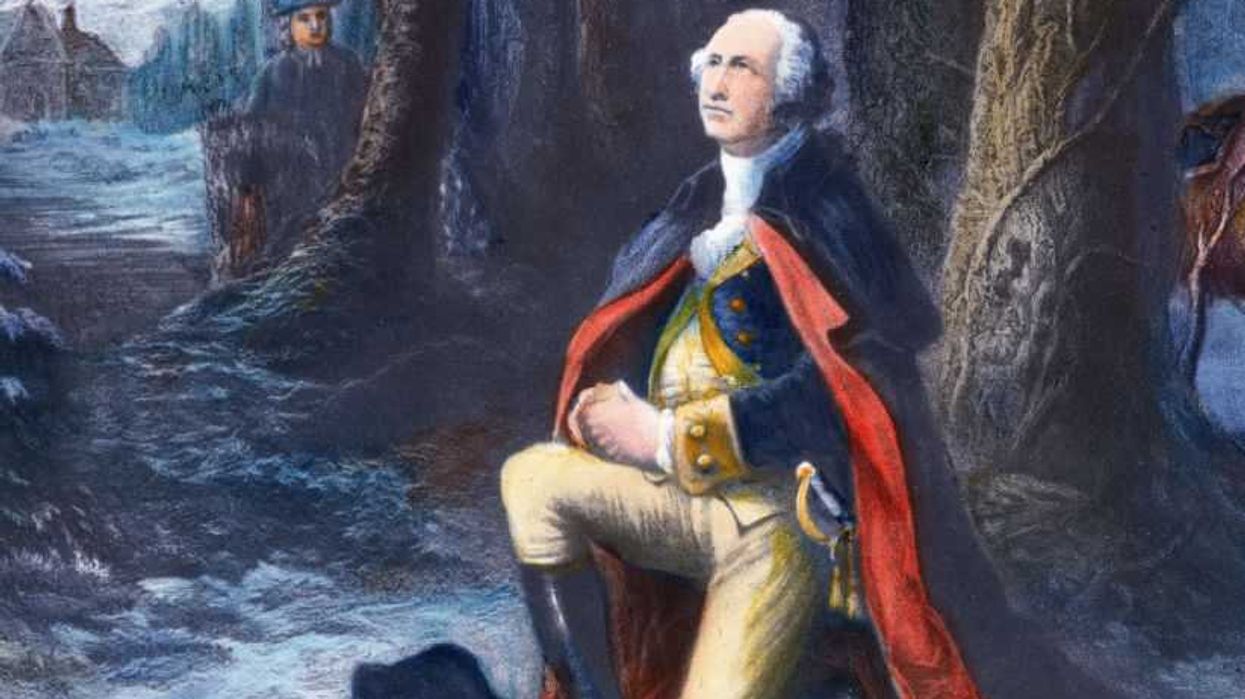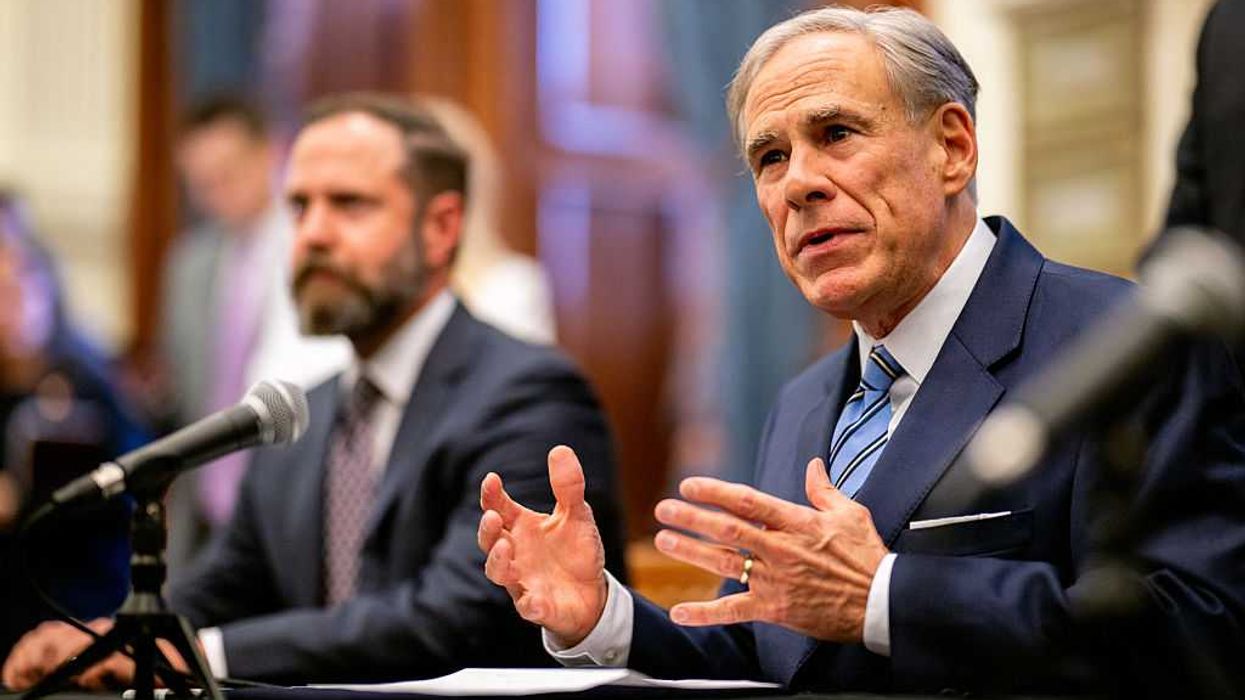By July 9, 1776, a copy of the Declaration of Independence reached New York City, where British naval ships occupied New York Harbor. Revolutionary spirit and tension were running high. George Washington, commander of the Continental forces in New York, read the Declaration aloud in front of City Hall. The crowd cheered wildly, and later that day tore down a statue of King George III. They melted down the statue to make 42,000 musket balls for the ragtag American army.
America's separation from Great Britain was officially in writing. Now came the hard part.
The Declaration of Independence defines who we are, what we believe, and what we aspire to be. It is a mission statement. But no one said it would be easy to implement.
The Declaration was not simply an official announcement of our split from Great Britain. If it was just that, it could've been a lot shorter. It was also an announcement that we're starting a new company, and here's what we're basing it on. It didn't just declare independence — it declared principles. It declared how we were going to organize ourselves once we were out on our own, and it set up guardrails to help ensure we didn't end up like the country we were leaving in the first place.
The Founders set us up for success, but America is now fumbling it away, largely thanks to our dangerous drift from the original blueprints.
In our national discourse, it's hard to find agreement even on fundamentals like the Declaration of Independence anymore. There's no time for old-fashioned things like the Declaration when social media can fuel our outrage around the clock.
We have lost touch with our national DNA.
How often do we jump to outrage before we have any kind of perspective on a matter? In 2017, President Trump had only been in office for one month before over 100 activists rewrote a version of the Declaration of Independence, rewording it with Trump in the King George III role. Trump had been in office for a single month. The focus has shifted from unity to partisan winning at all costs. We have lost touch with our national DNA.
Our basic knowledge of the Declaration, Constitution, and Bill of Rights is so weak that we don't have a clue how they relate to each other. As of late 2017, 37 percent of Americans could not name any of our First Amendment rights. And 33 percent of Americans could not name any branch of our government.
Here's another example of our painful misunderstanding. In a Psychology Today article written before the 2016 presidential election, Dr. Mark Goulston was trying to figure out a way to understand Donald Trump and Hillary Clinton. This is what he came up with:
Trump represents the Declaration of Independence. Clinton represents the U.S. Constitution.
He tries to explain that Trump supporters are eager to declare their independence from the political swamp system. For the Constitution side of things, he wrote:
It [the Constitution] may have stood the test of time for so long because it was drafted following a long, costly and awful war that the founding fathers wanted to prevent from happening again. That intention possibly enabled them to create a document that was relatively free from special interests and personal agendas. [Hillary] Clinton is more like the Constitution than the Declaration of Independence and appears to be more about getting things done than declaratively taking a stand.
Besides being a completely bogus way to interpret Hillary Clinton, this comparison makes your brain hurt because it so fundamentally misunderstands the relationship between the Declaration and the Constitution. They are not rival documents.
He says the Constitution has stood the test of time because the founders wrote it to prevent another long, costly war. What? No. It stands the test of time because it was designed to protect the “unalienable rights" of the Declaration.
He goes on to say that we need a new Constitutional Convention because, “We may just need to retrofit it to fit modern times."
This is the primarily leftist idea that America is up against today — that the founding documents worked well for their time, but that they now need an overhaul. Progressives seem to live by the motto, if it ain't broke, fix it anyway. Rather than “fixing" things, however, when we understand the Declaration, Constitution, and Bill of Rights as they already are, we discover that they still work because they're tied to universal principles, not a specific point in time.
Here's one way to think about the Declaration, Constitution, and Bill of Rights. The Declaration is our thesis, or mission statement. The Constitution is the blueprint to implement that mission statement. And the Bill of Rights is our insurance policy.
Aside from the practical business of separating from Great Britain, the gist of the Declaration is that humans have natural rights granted us by God, and that those rights cannot be compromised by man. The Constitution, then, is the practical working out of how do we design a government that best protects our natural rights?
The creation of the Constitution did not give us rights. The existence of our rights created the Constitution. The Constitution just recognizes and codifies those rights, clarifying that the government does not have authority to deprive us of those rights.
The Founders were extremely paranoid about corruption and abuse of power. They designed a system to avoid as much of that as possible.
The Progressive and postmodern idea that rich white guys founded America as an exclusive country club for enriching themselves doesn't hold water. If that had been their true intent, they seriously handicapped themselves with the emphasis on rights and the checks on power that they included in these three documents. Any honest reading of the Constitution, and of the massive ratification debates that dragged on in individual state legislatures, makes one thing very clear — the Founders were extremely paranoid about corruption and abuse of power. They designed a system to avoid as much of that as possible.
Still, this Declaration-Constitution-Bill of Rights-trifecta thing is just a conservative line, right? It's just something we say because we're stuck in the past and we're in denial about the new and improved, diverse, post-gender, postmodern America, right?
As the Declaration puts it, “let facts be submitted to a candid world."
In 1839, on the 50th anniversary of George Washington's inauguration as the nation's first president, the New York Historical Society invited former president John Quincy Adams to deliver a speech. As the son of John Adams, John Quincy wrote a speech about something near and dear to his — the Declaration of Independence and the Constitution. He said:
The Declaration of Independence and the Constitution of the United States, are parts of one consistent whole, founded upon one and the same theory of government… it had been working itself into the mind of man for many ages… but had never before been adopted by a great nation in practice…
Even in our own country, there are still philosophers who deny the principles asserted in the Declaration, as self-evident truths — who deny the natural equality and inalienable rights of man — who deny that the people are the only legitimate source of power – who deny that all just powers of government are derived from the consent of the governed… I speak to matters of fact. There is the Declaration of Independence, and there is the Constitution of the United States — let them speak for themselves.
They can, and they do. They don't require any interpretation or updates because our inalienable rights have not changed.
Progressives and Democratic Socialists believe our rights come from the government, but the Declaration emphasizes that our rights are inalienable and are granted to mankind by God. By the way, we usually only use the word “inalienable" now when we're talking about the Declaration of Independence, so we often don't even understand the word. It means something that is not transferable, something incapable of being taken away or denied.
We don't know our founding documents anymore and we're witnessing the disastrous results of this deficiency. We've lost sight of what made the American Revolution so unique. It was the first time subjects who had colonized new lands, rebelled against the country they came from. Government by the people and for the people is a principle that changed the world. Most countries fall apart after their revolutions. We thrived because of the firm principles of the Declaration, and the protection of those principles in the Constitution and Bill of Rights. It's a unique system with a remarkable track record, in spite of our human frailty. But this system is not inevitable — for it to continue to work, we must understand and protect it.

 Harold M. Lambert / Contributor | Getty Images
Harold M. Lambert / Contributor | Getty Images
 Adam Gray / Stringer | Getty Images
Adam Gray / Stringer | Getty Images Anadolu / Contributor | Getty Images
Anadolu / Contributor | Getty Images Brandon Bell / Staff | Getty Images
Brandon Bell / Staff | Getty Images